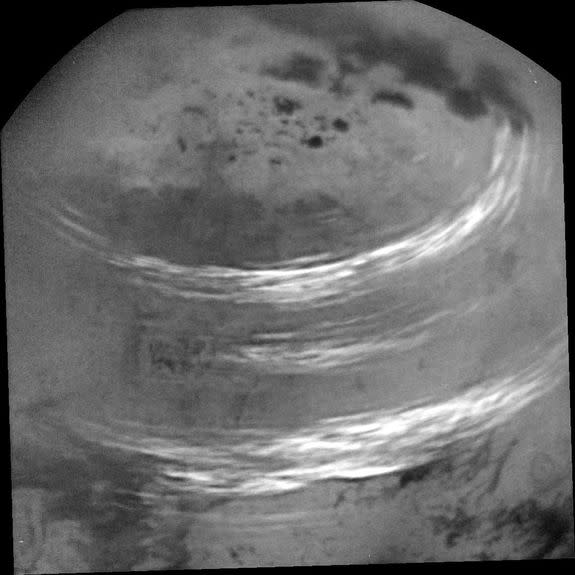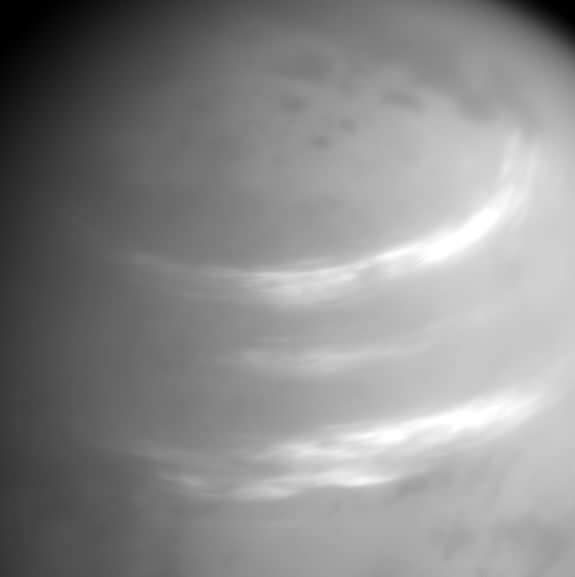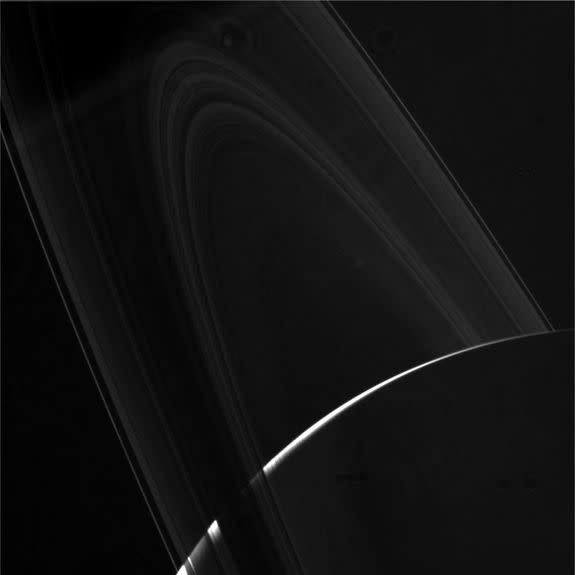Saturn's moon Titan looks like a pretty chill place in new photos

Titan, Saturn's largest moon, captures the imagination.
The distant world plays host to lakes of liquid methane and ethane that look like they could be a nice spot for an alien yachting expedition, dunes of hydrocarbons, and clouds that sometimes rain methane down onto the surface of the world, feeding its lakes.
Long story short, Titan is everything you could wish for in an alien world, and new photos taken by the Saturn-exploring Cassini spacecraft put that on stark display.
SEE ALSO: NASA just schooled actor Milo Ventimiglia about space because Twitter
The new images — snapped by Cassini on May 7 — show bright, fluffy streaks of methane clouds in the world's atmosphere.

Image: NASA/JPL-Caltech/Space Science Institute
This isn't the first time these types of clouds have been seen by Cassini. Scientists have been keeping an eye on these types of features for about a year, though these new images are particularly gorgeous.
Titan is actually thought to be one of the best places in the solar system to hunt for alien life. Scientists think it's possible that Titan actually has a huge subsurface ocean beneath its crust which might be perfect for microbes to thrive.

Image: NASA/JPL-Caltech/Space Science Institute
The May 7 photos were taken from Cassini's new orbit around Saturn that brings it through the 1,500-mile-wide gap between the huge planet and its plane of rings.
During this ring dive orbit, Cassini also took some images of the huge planet and its rings looking moody in black and white.

Image: NASA/JPL-Caltech/Space Science Institute
Cassini spacecraft has been exploring Saturn and its many moons on humanity's behalf for more than 10 years, but its mission will come to an end in September when the spacecraft makes its planned death plunge into Saturn's thick atmosphere.
Mission controllers working with Cassini decided to force it to fall into Saturn's atmosphere in order to protect the planet's moons like Titan and Enceladus, which also seems to have a subsurface ocean, from contamination.
WATCH: Watch clouds move above Saturn's largest moon in new NASA video


